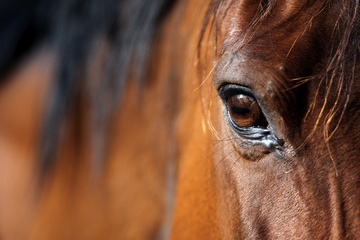Horsemeat Trade Leaves Consumers Wondering What's on Their Plates (Op-Ed)


Joanna Swabe is the European Union Director for Humane Society International. This piece is adapted from the article Scant Progress Made in EU Horsemeat Regulation on Horsetalk. Swabe contributed this article to LiveScience's Expert Voices: Op-Ed & Insights.
The horsemeat scandal, it seems, is far from over. One only needs to look at the recent case revealing Latvian horsemeat in frozen meat-pies sold in the United Kingdom (UK) to see that horsemeat fraud is widespread.
Even in the legal horsemeat trade, things are not completely transparent. It has been three years since the European Union (EU) introduced strict new requirements for the import of horsemeat from non-EU countries, yet meat from horses that should never have been slaughtered for export continues to arrive on the EU market. The European Commission has failed to stem that tide of horsemeat imports.
The question is, when can we expect the commission to act?
Officials have yet to explicitly link imports from non-EU countries and the horsemeat implicated in the recent UK fraud. However, for those of us working to protect horses, the discoveries of illicit horsemeat in beef burgers, lasagne and pies provides a missing puzzle piece: could this be where so much of the horsemeat imported into the EU is going?
Food suppliers already lawfully and routinely process horsemeat into cheap convenience foods in some parts of Europe without many consumers realizing it (unless they read the small print). It is easy to see how unscrupulous operators have been able to launder horsemeat into the food chain by passing it off as beef. The rise of processed meat products explains, in part, the apparent surfeit of horsemeat in Europe, because most consumers are not clamouring to eat it.
Indeed, the European horsemeat industry has been in steady decline since the 1960s as both culinary tastes and cultural attitudes have gradually changed. Even in France and Italy, traditional heartlands of horse slaughter and consumption, the number of horses killed has waned significantly. Statistics from the United Nations Food and Agriculture Organization show that in 1961, 333,000 horses were slaughtered in France and 283,000 horses were slaughtered in Italy. By 2011, the numbers had dropped to 15,500 and 62,237, respectively.
Get the world’s most fascinating discoveries delivered straight to your inbox.
Evidently, only a minority of French and Italian consumers are actually going out of their way to regularly consume horse flesh. A survey conducted by Ipsos MORI for Humane Society International in 2012 found that only 50 percent of respondents in France and 58 percent in Italy believed that it was acceptable to eat horses. Moreover, most respondents said they never or only sometimes eat horsemeat, whilst a mere 3 percent of Italians and 4 percent of French claimed to eat it frequently.
The fact is, Europe's declining horsemeat industry is supplemented by significant global imports. EU import statistics show large quantities of horsemeat annually being imported from Argentina, Brazil, Canada, Mexico and Uruguay.
Even when horsemeat appears on the label of processed meat products with no question of food fraud, without mandatory origin labelling, EU consumers still have no idea where that meat came from. Why does that matter? Because imported horse flesh that fails to meet EU food safety standards poses a potentially serious health hazard.
The end of July marked three years since the EU introduced stricter import requirements. Only imports of horsemeat from horses with a known lifetime medical-treatment history, and whose records showed they satisfied veterinary medicine withdrawal periods, are supposed to be allowed in to the EU. Yet, measures taken by export countries to preclude veterinary drug residues from entering the food chain are not fit for purpose.
Approximately 20 percent of horsemeat consumed in the EU comes from Canada and Mexico, but the majority of that meat actually derives from U.S. horses — which are not raised for slaughter, but instead vendors acquired the horses from random sources. This is worrying because, in the United States, the use of veterinary drugs such as phenylbutazone — a non-steroidal anti-inflammatory prohibited in the EU for use in food-producing animals — is widespread, and there is no mandatory, lifetime, veterinary medical record-keeping.
Canada's and Mexico's lack of compliance has been exposed multiple times by non-governmental organizations, journalists and the European Commission's Food and Veterinary Office (FVO), including the problem of so-called "kill buyers," who purchase U.S. horses at auction and ship them long distances over the border to be killed for food. Since 2010, FVO audits have found that Canada and Mexico have failed to ensure that all horsemeat meets EU requirements.
In the aftermath of one of Europe's biggest-ever food scandals, the European Commission has consistently failed to act to stop imports of horsemeat from third-party countries that do not meet EU food-safety requirements. With consumer confidence at an all time low — exemplified by this recent survey from Ireland — it is the Commission's duty to ensure that meat not considered fit for human consumption by EU standards no longer ends up on EU consumers' plates.
The views expressed are those of the author and do not necessarily reflect the views of the publisher. This article was originally published on LiveScience.com.


